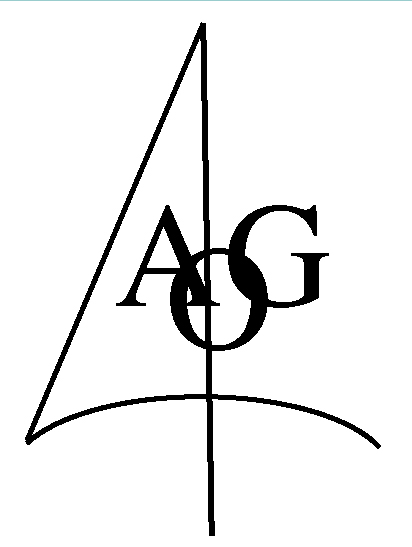
Sponsored by Arizona Oil and Gas, Inc.
 Assessing Unconventional (Continuous) Hydrocarbon Resource Plays by Don Yurewicz, ExxonMobil (Retired)
Assessing Unconventional (Continuous) Hydrocarbon Resource Plays by Don Yurewicz, ExxonMobil (Retired)
Abstract: Unconventional resources plays (also referred to as continuous resource plays) are regionally extensive hydrocarbon accumulations that lack any obvious relationship to structural closures or stratigraphic traps with downdip water contacts. Reservoir and fluid properties vary considerably within these plays but most are characterized by extremely small pores and very low permeability. Reservoirs include mudstones (shale), sandstones, coals, and carbonates, and fluids range from dry gas to oil (including heavy oil). The established processes for assessing conventional plays which relies on risking, sizing, and counting discrete prospects or fields is not applicable for continuous plays (Hood and Yurewicz, 2008). Most continuous resource plays are better assessed as a single large hydrocarbon accumulation with highly variable resource density. Because economic margins may be thin in these plays, business success often depends on early identification of favorable areas with higher resource density, which in turn correlates to areas of better well performance. In addition to determining in-place and recoverable volumes, the assessment methodology for continuous resources must, therefore, be flexible enough to map variable resource density, to relate hydrocarbon volumes to well performance, and to adapt to situations ranging from little or no well data to thousands of wells (Hood, Yurewicz and Steffen, 2012).
Play assessment provides a powerful mechanism for integrating geologic insights into business decisions. To incorporate the unique aspects of continuous resources, a process was developed to apply a hybrid grid and polygon based methodology (Hood and Yurewicz, 2008). The play is subdivided into a series of analysis polygons that provide the basis for probabilistic calculations. The polygon boundaries can be dynamic (mapped geologic limits), static (leases), arbitrary, or some combination of these. Those geologic properties mapped spatially as grids (e.g. gross thickness, net-to-gross, or porosity) are evaluated within each analysis polygon to obtain inputs for the probabilistic assessment. Geologic properties that are not available as spatially varying estimates can be assigned directly with appropriate ranges of uncertainty. Resource uncertainty can be captured both as ranges around most likely parameter estimates and as multiple geologic or operational scenarios. Risk dependency and volumetric correlation must be defined in order to obtain robust probabilistic aggregations of multiple analysis polygons. Fully probabilistic results lead to better informed business decisions by providing information on high-side and low-side outcomes.
Ultimately, assessments based on well performance provide the clearest indication of the recoverable resource and economic viability of a play. Unfortunately, well performance-based approaches are not reliable until a high operational efficiency has been achieved and the number of wells with adequate production histories is sufficient to clarify the primary controls on resource density. To provide early prediction of well performance within the context of volumetric assessment, probabilistic ranges of well EURs are estimated for each assessment polygon based on volumetric inputs coupled with assumptions about likely drainage areas (Hood, Yurewicz and Steffen, 2012). As performance-based EUR projections become available for wells, they can be compared to the specific recoverable volume prediction from the resource density grid along with the distribution of well EURs predicted for the polygon.
Well performance is key to the economic viability of a play. Combining analog datasets of initial potential (IP) with well EUR provides a dynamic linkage of the volumetric assessment to well performance. Applying relationships between EUR and IP from analog plays to EUR curves (one per polygon) for the play of interest yields spatially varying families (distributions) of IP’s. By recasting assessed volumes in terms of well productivity, this process supports economic analyses explicitly linked to spatially varying geologic inputs.
References
Hood, K. C., and D. A. Yurewicz, 2008, Assessing the Mesaverde basin-center gas play, Piceance Basin, Colorado: AAPG Hedberg Series No. 3, p. 87-104.
Hood, K. C., D. A. Yurewicz, and K. J. Steffen, 2012, Assessing continuous resources – building the bridge between static and dynamic analyses: Bul. Canadian Petroleum Geology, v. 60, p. 1-22.
Bio: Don received a B.A. in geology from Rutgers University (1970) in New Jersey and M.S. (1973) and Ph.D. (1976) degrees in geology from the University of Wisconsin. Don’s graduate work at Wisconsin focused on sedimentology, stratigraphy and diagenesis of deep- to shallow-marine carbonates.
Don began his career as a research specialist in carbonates at Exxon Production Research Company in Houston in 1977. His research focused on the hydrocarbon source potential of carbonate rocks and the application of fluorescence microscopy in carbonate petrographic studies. He also assisted in exploration and production projects of carbonate reservoirs at Prudhoe Bay in Alaska, the Maracaibo Basin in Venezuela, the Midland Basin in West Texas, and in the South China Sea. Teaching was a major part of his work at Exxon’s research center and he led courses in modern and ancient carbonates for Exxon offices around the world.
He then transferred to an exploration assignment in 1985. His work ranged from prospect and play identification in the U. S. Gulf Coast and Mid-continent regions, to an array of regional studies in North and South America, the Middle East, and the Caspian focusing on hydrocarbon systems, reservoir characterization, basin modelling and hydrocarbon assessment.
Don began working on unconventional resources in 2002 when he conducted a study of fluid distribution in tight gas sandstones in the Piceance Basin, Colorado. While working in the Piceance Basin he helped assessors from the Technology division of ExxonMobil in the development of a methodology for assessing this unconventional play. That methodology was later adapted for evaluating a broad range of unconventional plays including shale gas, tight oil, coal bed methane, and heavy oil. During the last 7 years of his career, Don specialized in assessing unconventional resources and assisted in evaluation of unconventional plays around the world. Teaching remained an integral part of Don’s long career. In addition to teaching in carbonate schools, Don developed a popular field seminar in unconventional resources and a workshop for assessing unconventional resources.